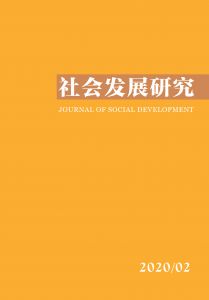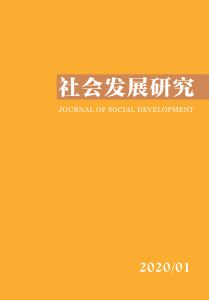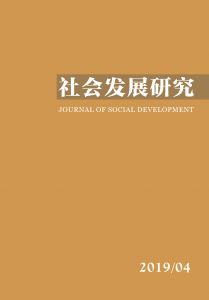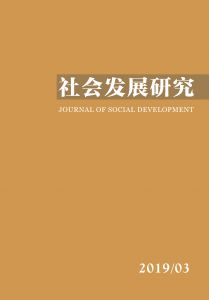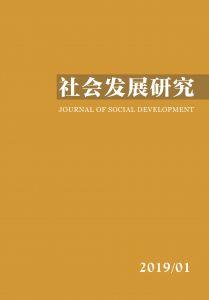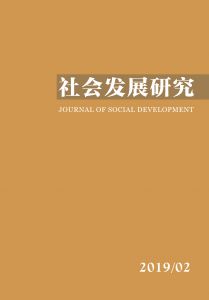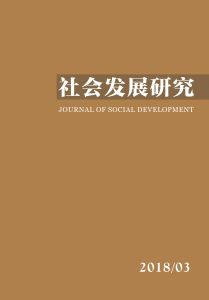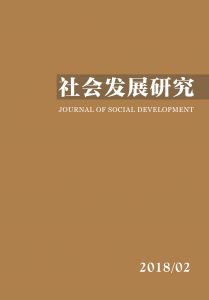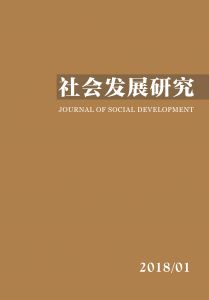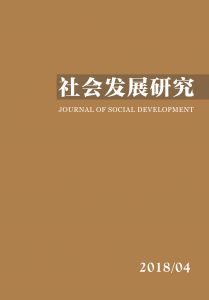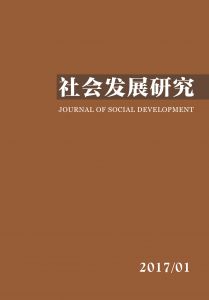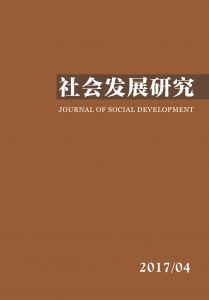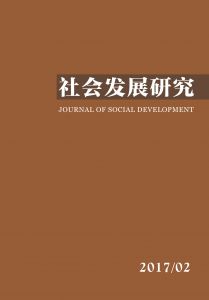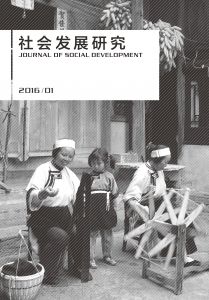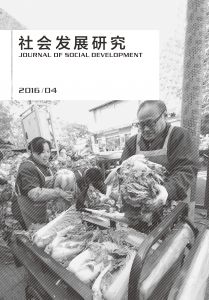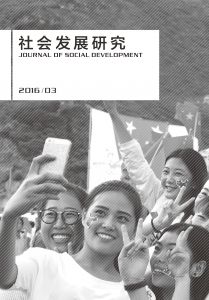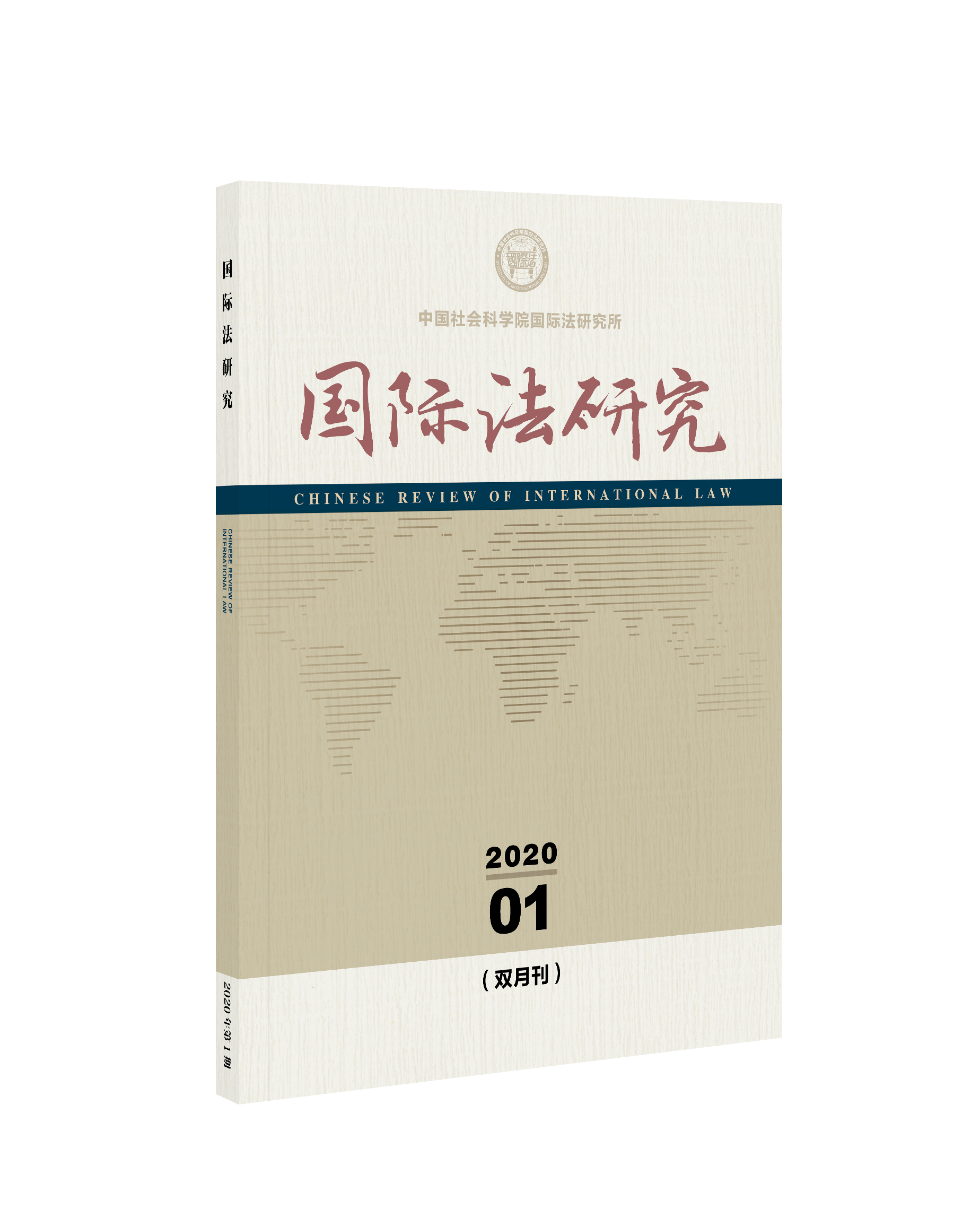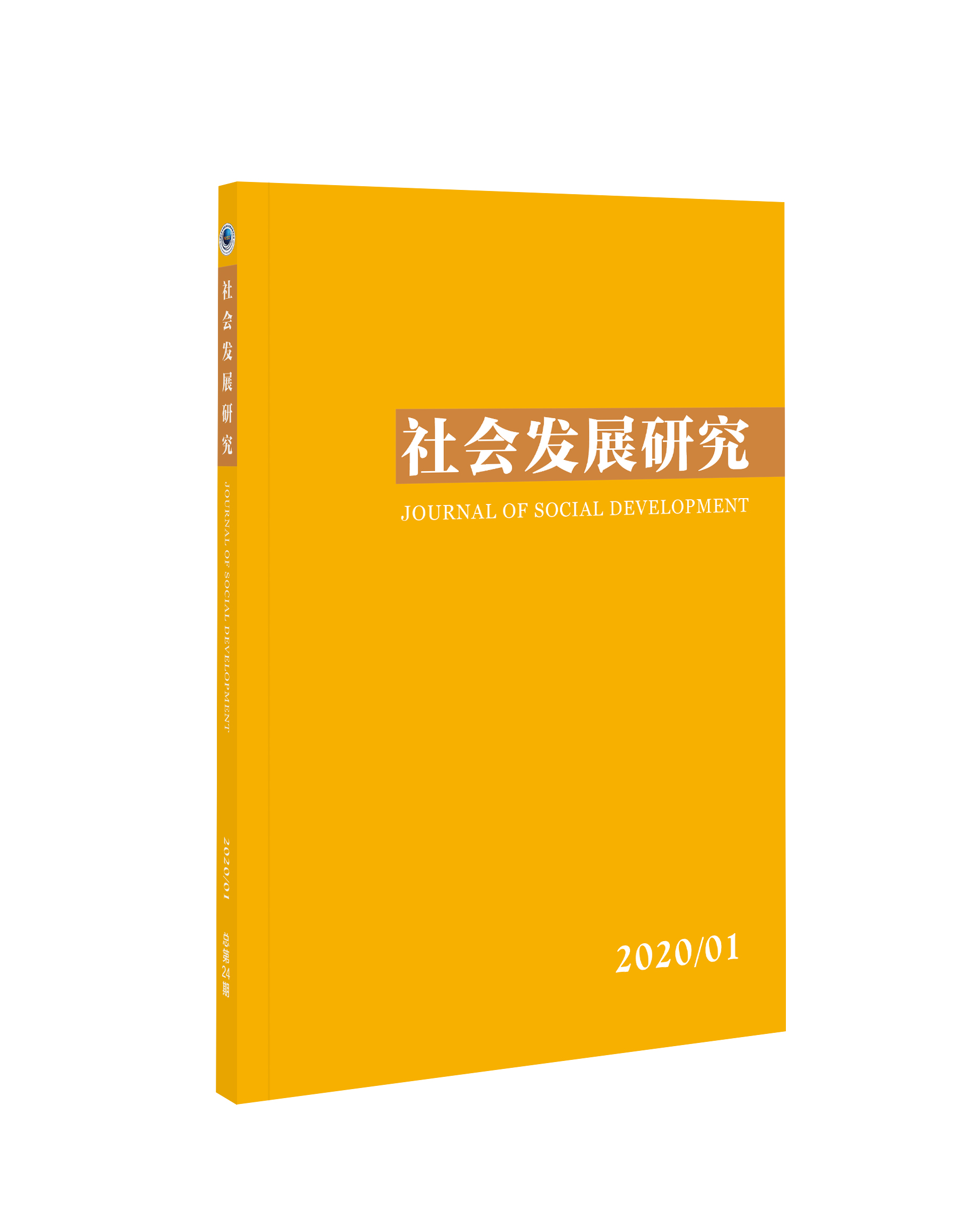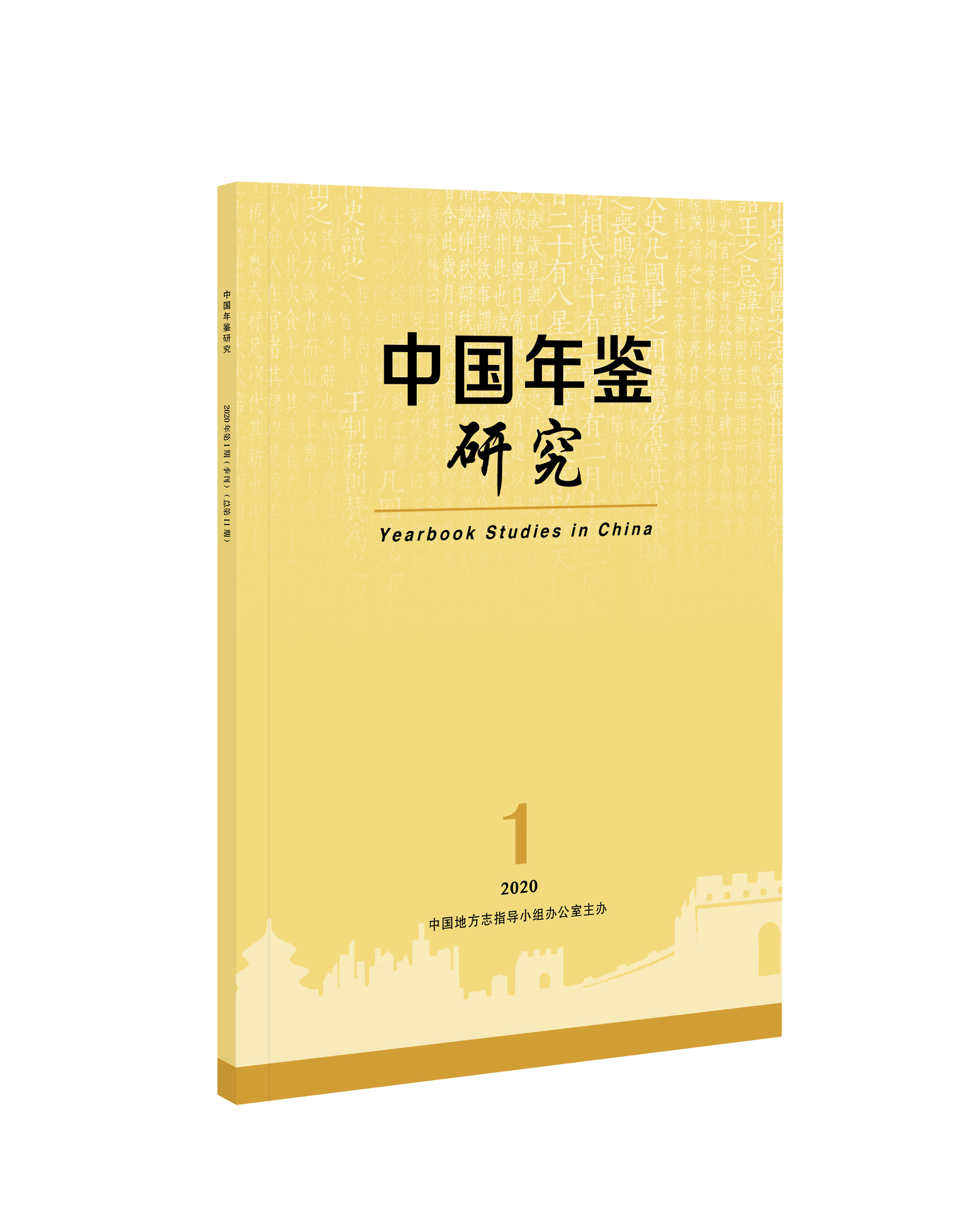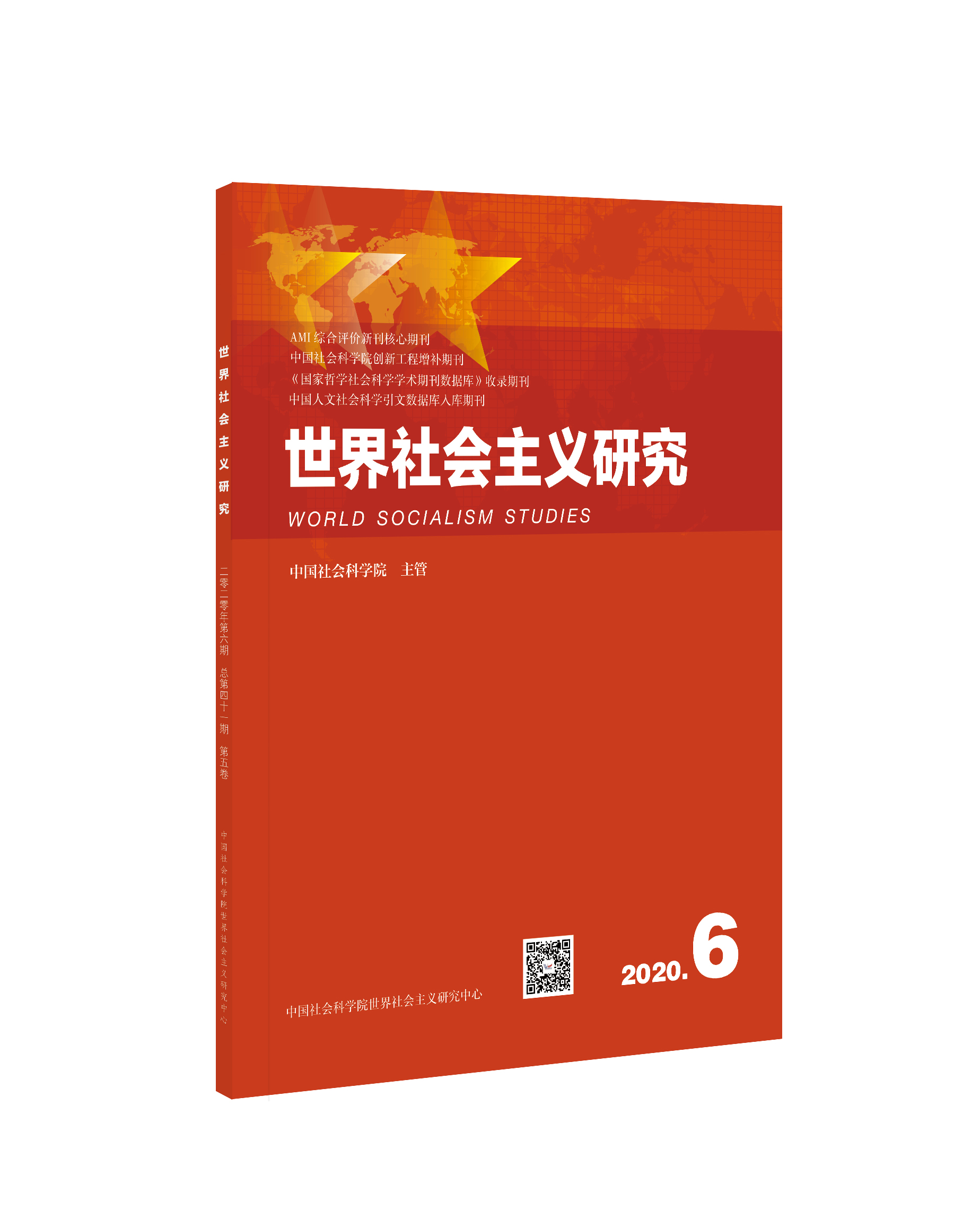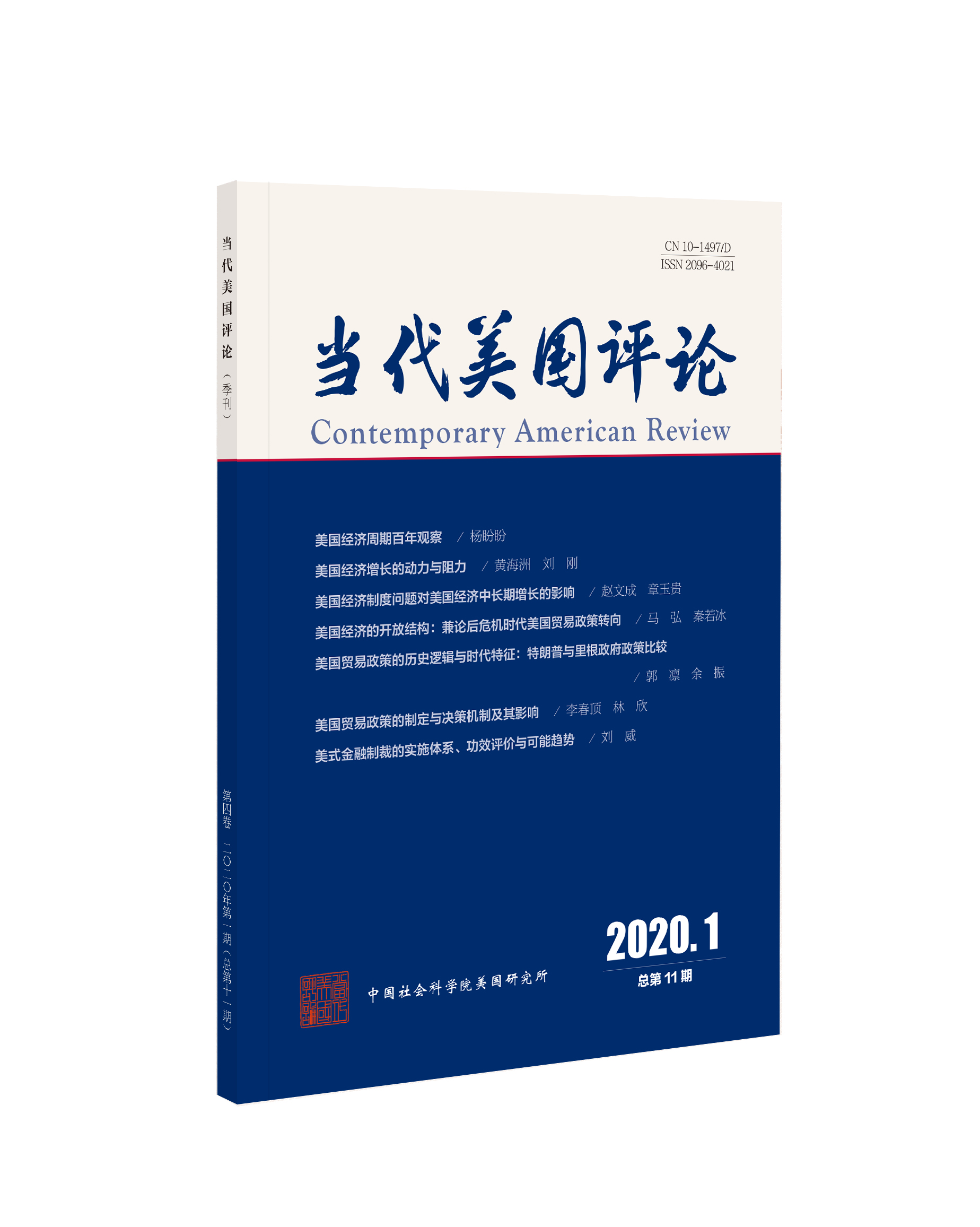最新期刊

目录
过往期刊
参考文献
-
编委会
-
·论文·
-
中国城市居民阶层地位认同偏移研究
-
网络条件下的组织形式与规模
-
高等教育体系与精英阶层再生产
-
知识劳动中的文化资本重塑
-
就业质量的概念内涵及其理论基础
-
粮管所撤销的社会学分析
-
报酬获得与员工参与
-
解释的断桥:从编码到理论
-
全球贸易自由化进程中劳工标准体系的分化与发展
-
无组织的利益与集体行动
-
-
·研究述评·
-
西方劳务移民社会治理研究
-
-
·书评·
-
时空结构中的资源、权力与实践
-
-
英文目录及摘要
-
征稿启事
-
期刊简介
-
《社会发展研究》网上投稿平台开通
-
版权页
按年份浏览:
- 全部
- 2020
- 2019
- 2018
- 2017
- 2016
- 2015
- 2014
[1][1]布迪厄,皮埃尔、华康德,1998,《实践与反思》,李康、李猛译,北京:中央编译出版社。
[2][2]董运生,2006,《地位不一致与阶层结构变迁》,吉林大学博士学位论文。
[3][3]冯仕政,2011,《中国社会转型期的阶级认同与社会稳定》,《黑龙江社会科学》第3期。
[4][4]高勇,2013,《地位层级认同为何下移——兼论地位层级认同基础的转变》,《社会》第4期。
[5][5]吉登斯,1998,《社会的构成》,李康、李猛译,北京:三联书店。
[6][6]雷开春,2009,《白领新移民的地位认同偏移及其原因分析》,《青年研究》第4期。
[7][7]李春玲,2003,《中国当代中产阶层的构成及比例》,《中国人口科学》第6期。
[8][8]李培林,2005,《社会冲突与阶层意识——当代中国社会矛盾研究》,《社会》第1期。
[9][9]李培林、张翼、赵延东、梁栋,2005,《社会冲突与阶级意识——当代中国社会矛盾问题研究》,北京:社会科学文献出版社。
[10][10]刘欣,2001,《转型期中国大陆城市居民的阶层意识》,《社会学研究》第3期。
[11][11]刘欣,2005,《当前中国社会阶层分化的制度基础》,《社会学研究》第5期。
[12][12]刘欣,2007,《中国城市的阶层结构与中产阶层的定位》,《社会学研究》第6期。
[13][13]卢福营、张兆曙,2006,《客观地位分层与主观地位认同》,《中国人口科学》第3期。
[14][14]陆学艺,2002,《如何认识新型社会阶层》,《前进》第5期。
[15][15]陆益龙,2010,《乡村居民的阶级意识和阶层认同:结构抑或建构》,《江苏社会科学》第1期。
[16][16]陆益龙,2011,《态度、认同与社会分层的主观建构——基于2008 CGSS的描述性分析》,《湖南社会科学》第5期。
[17][17]沈晖,2008,《当代中国中间阶层认同研究》,北京:中国大百科全书出版社。
[18][18]王春光、李炜,2002,《当代中国社会阶层的主观性建构和客观实在》,《江苏社会科学》第4期。
[19][19]赵延东,2005,《中间阶层认同缺乏的成因及后果》,《浙江社会科学》第2期。
[20][20]周晓虹编,2005,《中国中产阶层调查》,北京:社会科学文献出版社。
[21][21]周晓虹,2007,《〈白领〉、中产阶级与中国的误读》,《读书》第5期。
[22][22]Jackman M. R. & Jackman R. W. 1973,“An Interpretation of the Relation between Objective and Subjective Social Status.” American Sociological Review 38(10).
[23][23]卡斯特,曼纽尔,2000/2001,《网络社会的崛起》,夏铸九、王志弘等译,北京:社会科学文献出版社。
[24][24]陈郁编,1996,《企业制度与市场组织——交易费用经济学文选》,上海:上海三联书店、上海人民出版社。
[25][25]钱德勒,小艾尔弗雷德,1977/1987,《看得见的手——美国企业的管理革命》,重武译,北京:商务印书馆。
[26][26]科斯等,2004,《财产权利与制度变迁:产权学派与新制度学派译文集》,刘守英译,上海:上海人民出版社。
[27][27]诺思,道格拉斯,1994,《经济史中的结构与变迁》,上海:上海三联书店、上海人民出版社。
[28][28]Ronald Coase 1988,The Firm,the Market,and the Law . Chicago,Illinois:The University of Chicago Press.
[29][29]Douglass C.North 1981,Structure and Change in Economic History . New York:Norton & Company.
[30][30]Manuel Castells 2010,The Rise of the Network Society . Wiley-Blackwell,Second Edition.
[31][31]布尔迪约(布迪厄)、帕斯隆,2002,《继承人:大学生与文化》,刑克超译,北京:商务印书馆。
[32][32]布迪厄,2004,《国家精英:名牌大学与群体精神》,杨亚平译,北京:商务印书馆。
[33][33]陈廷柱,2004,《在公平与不公平之间——论高等教育的地区差异》,《教育发展研究》第9期。
[34][34]费孝通等,1948,《皇权与绅权》,载《乡土中国》,上海:上海人民出版社。
[35][35]格拉汉姆,休·戴维斯、南希·戴蒙德,2008,《美国研究型大学的兴起——战后年代的精英大学及其挑战者》,保定:河北大学出版社。
[36][36]关锋,2013,《为自由的民主计划和社会技术——曼海姆晚期社会学思想解析》,《社会学研究》第1期。
[37][37]哈特曼,米切尔,2011,《精英与权力》,霍艳芳译,北京:中国社会科学出版社。
[38][38]拉斯韦尔、卡普兰,2012,《权力与社会》,王菲易译,上海:上海人民出版社。
[39][39]勒庞,2000,《乌合之众:大众心理研究》,冯克利译,北京:中央编译出版社。
[40][40]李春玲,2010,《高等教育扩张与教育机会不平等》,《社会学研究》第3期。
[41][41]李春玲,2014a,《“最难就业年”的大学毕业生就业状况——基于12所高校毕业生追踪调查》,载《社会蓝皮书:2014年中国社会形势分析与预测》,北京:社会科学文献出版社。
[42][42]李春玲,2014b,《教育不平等的年代变化趋势(1940-2010)——对城乡教育机会不平等的再考察》,《社会学研究》第2期。
[43][43]李汉林、李路路,1999,《资源与交换——中国单位组织中的依赖性结构》,《社会学研究》第4期。
[44][44]李培林,2004,《村落的终结——羊城村的故事》,北京:商务印书馆。
[45][45]梁晨、李中清,2012,《无声的革命:北京大学与苏州大学学生社会来源研究(1952-2002)》,《中国社会科学》第1期。
[46][46]曼海姆,2011,《重建时代的人与社会——现代社会结构研究》,张旅平译,江苏:译林出版社。
[47][47]米尔斯,2004,《权力精英》,王崑、许荣译,南京:南京大学出版社。
[48][48]米歇尔斯,2003,《寡头统治铁律:现代民主制度中的政党社会学》,任军锋等译,天津:天津人民出版社。
[49][49]莫斯卡,2002,《统治阶级:政治科学原理》,贾鹤鹏译,南京:译林出版社。
[50][50]帕累托,2003,《精英的兴衰》,刘北成译,上海:上海人民出版社。
[51][51]王英杰,2008,《美国研究型大学辨析》,《清华教育评论》第1期。
[52][52]谢作栩,2001,《马丁·特罗高等教育大众化理论评述》,《现代大学教育》第3期。
[53][53]钟云华、沈红,2009,《社会分层对高等教育公平影响的实证研究》,《复旦教育论坛》第5期。
[54][54]周雪光、图玛、摩恩,2002,《国家社会主义制度下的社会阶层动态分析:1949—1993年的中国城市状况》,载边燕杰等主编《市场转型与社会分层:美国社会学者分析中国》,北京:三联书店。
[55][55]Keller,S. 1963,Beyond the Ruling Class.Strategic Elites in Modern Society . New York:Random House.
[56][56]Trow,M. 1972,“The Expansion and Transformation of Higher Education.” International Review of Education 18.
[57][57]Trow,M. 1973,“Problems in the Transition from Elite to Mass Higher Education.” Policies for Higher Education . See the General Report on the Conference on Future Structures of Post-Secondary Education(Paris:OECD,1974).
[58][58]布尔迪厄,皮埃尔,1997,《文化资本与社会炼金术——布尔迪厄访谈录》,包亚明译,上海:上海人民出版社。
[59][59]布迪厄,皮埃尔、华康德,2004,《实践与反思》,李猛、李康译,北京:中央编译出版社。
[60][60]布雷弗曼,哈里,1978,《劳动与垄断资本——二十世纪中劳动的退化》,方生等译,北京:商务印书馆。
[61][61]布洛维,迈克,2005,《制造甘愿——垄断资本主义劳动过程的历史变迁》,林宗弘等译,台北:群学出版有限公司。
[62][62]葛兰西,安东尼奥,2000,《狱中札记》,曹雷雨、姜丽、张跣译,北京:中国社会科学出版社。
[63][63]卡斯特,曼纽尔,2007,《网络星河:对互联网、商业和社会的反思》,郑波、武炜译,北京:社会科学文献出版社。
[64][64]梁萌,2014,《互联网领域中的知识工人》,《学术探索》第3期。
[65][65]麦克切尔,凯瑟琳、文森特·莫斯可编,2014,《信息社会的知识劳工》,曹晋等译,上海:上海译文出版社。
[66][66]斯沃茨,戴维,2006,《文化与权力:布尔迪厄的社会学》,陶东风译,上海:上海译文出版社。
[67][67]Barrett,Rowena 2004,“Working at Webboyz:An analysis of control over the software development labour process.” Sociology 38(4).
[68][68]Brophy,Enda 2011,“Language Put to Work:Cognitive Capitalism,call center labor,and worker inquiry.” Journal of Communication Inquiry 35(4).
[69][69]Drucker,Peter 2001,“The Next Society.” The Economists (Nov.1st).http://www.economist.com/node/770819.
[70][70]Gillespie,Tarleton 2006,“Engineering a Principle:‘End-to-End’ in the design of the Internet.” Social Studies of Science 36(3).
[71][71]Kunda,Gideon 2006,Engineering Culture:Control and commitment in a high-tech corporation . Philadelphia:Temple University Press.
[72][72]Sewell,Graham 2005,“Nice Work?Rethinking managerial control in an era of knowledge work.” Organization 12(5).
[73][73]Upadhya,Carol 2008,In an Outpost of the Global Economy:Work and workers in India’s information technology industry . New Delhi:Routledge.
[74][74]Upadhya,Carol 2009,“Controlling Offshore Knowledge Workers:Power and agency in India’s software outsourcing industry.” New Technology,Work and Employment 24(1).
[75][75]程延园,2005,《劳动关系学》,北京:中国劳动社会保障出版社。
[76][76]多亚尔、高夫,1991/2008,《人的需要理论》,汪淳波、张宝莹译,北京:商务印书馆。
[77][77]关信平,2011,《论当前我国转变社会发展方式》,《江苏社会科学》第5期。
[78][78]郭于华、黄斌欢,2014,《世界工厂的“中国特色”——新时期工人状况的社会学鸟瞰》,《社会》第4期。
[79][79]国福丽,2009,《国外劳动领域的质量探讨:就业质量的相关范畴》,《北京行政学院学报》第1期。
[80][80]国福丽,2011,《就业质量及其影响因素研究:来自中国中小企业的证据》,哈尔滨:黑龙江大学出版社。
[81][81]国际劳工组织,2007,《就业和体面劳动主流化工具包》,日内瓦:国际劳工局。
[82][82]国家统计局,2013,《就业人员和工资》(http://www.stats.gov.cn/tjsj/zbjs/201310/t20131029_449543.html)10月29日。
[83][83]吉登斯,安东尼,2001/2003,《社会学》(第4版),赵旭东等译,北京:北京大学出版社。
[84][84]吉尔伯特、特雷尔,2002/2003,《社会福利政策导论》,黄晨熹、周烨、刘红译,上海:华东理工大学出版社。
[85][85]赖德胜、苏丽锋、孟大虎、李长江,2011,《中国各地区就业质量测算与评价》,《经济理论与经济管理》第11期。
[86][86]李克强,2014,《政府工作报告》,3月5日(http://www.gov.cn/guowuyuan/2014-03/05/content_2629550.htm)。
[87][87]梁萌,2007,《在生产体制中发现工人阶级的未来——读布洛维劳动过程理论三部曲之一〈辉煌的过去〉》,《社会学研究》第1期。
[88][88]刘素华,2005,《就业质量:内涵及其与就业数量的关系》,《内蒙古社会科学》第5期。
[89][89]马斯洛,1954/1987a,《人的动机理论》,陈炳权、高文浩译,载林方主编《人的潜能和价值——人本主义心理学译文集》,北京:华夏出版社。
[90][90]马斯洛,1954/1987b,《高级需要与低级需要》,许金声译,载林方主编《人的潜能和价值——人本主义心理学译文集》,北京:华夏出版社。
[91][91]彭华民,2006,《福利三角:一个社会政策的分析范式》,《社会学研究》第4期。
[92][92]森,阿玛蒂亚,1992/2006,《论经济不平等·不平等之再考察》,王利文、于占杰译,北京:社会科学文献出版社。
[93][93]森,阿玛蒂亚,1999/2002,《以自由看待发展》,任赜、于真译,北京:中国人民大学出版社。
[94][94]沈原,2006,《社会转型与工人阶级的再形成》,《社会学研究》第2期。
[95][95]苏丽锋,2013a,《我国转型期各地就业质量的测算与决定机制研究》,《经济科学》第4期。
[96][96]苏丽锋,2013b,《我国新时期个人就业质量研究——基于调查数据的比较分析》,《经济学家》第7期。
[97][97]唐美玲,2013,《青年农民工的就业质量:与城市青年的比较》,《中州学刊》第1期。
[98][98]Adhikari,Dev Raj,Katsuhiko Hirasawa,Yutaka Takakubo & Dhruba Lal Pandey 2011,“Decent Work and Work Life Quality in Nepal:An observation.” Employee Relations 34(1).
[99][99]Anker,Richard,Igor Chernyshev,Philippe Egger,Farhad Mehran & Joseph A.Ritter 2003,“Measuring Decent Work with Statistical Indicators.” International Labour Review 142(2).
[100][100]Berg,Peter,Ellen Ernst Kossek,Kaumudi Misra & Dale Belman 2014,“Work-Life Flexibility Policies:Do unions affect employee access and use?” Industrial and Labor Relations Review 67(1).
[101][101]Bianchi,Suzanne M. & Melissa A.Milkie 2010,“Work and Family Research in the First Decade of the 21st Century.” Journal of Marriage and Family 72(3).
[102][102]Brady,David,Regina S.Baker & Ryan Finnigan 2013,“When Unionization Disappears:State-level unionization and working poverty in the United States.” American Sociological Review 78(5).
[103][103]Burchell,Brendan,Kirsten Sehnbruch,Agnieszka Piasna & Nurjk Agloni 2014,“The Quality of Employment and Decent Work:Definitions,methodologies,and ongoing debates.” Cambridge Journal of Economics 38(2).
[104][104]Crettaz,Eric 2013,“A State-of-the-Art Review of Working Poverty in Advanced Economies:Theoretical models,measurement issues and risk groups.” Journal of European Social Policy 23(4).
[105][105]Davoine,Lucie,Christine Erhel & Mathilde Guergoat-Lariviere 2008,“Monitoring Quality in Work:European employment strategy indicators and beyond.” International Labour Review 147(2-3).
[106][106]Eurofound 2011,Social Dialogue and Working Conditions . Dublin:Eurofound.
[107][107]Eurofound 2012,Trends in job quality in Europe . Luxembourg:Publications Office of the European Union.
[108][108]Gough,Ian 2014,“Lists and Thresholds:Comparing the Doyal-Gough theory of human need with Nussbaum’s capabilities approach.” In Flavio Comim & Martha C.Nussbaum(eds.),Capabillities,Gender,Equality:Towards fundamental entitlements . Cambridge:Cambridge University Press.
[109][109]Green,Francis,Tarek Mostafa,Agnès Parent-Thirion,Greet Vermeylen,Gijs van Houten,Isabella Biletta & Maija Lyly-Yrjanainen 2013,“Is Job Quality Becoming More Unequal?” Industrial and Labor Relations Review 66(4).
[110][110]Greenan,Nathalie,Ekaterina Kalugina & Emmanuelle Walkowiak 2014,“Has the Quality of Working Life Improved in the EU-15 between 1995 and 2005?” Industrial and Corporate Change 23(2).
[111][111]Holman,David 2013,“Job Types and Job Quality in Europe.” Human Relations 66(4).
[112][112]ILO 2009,Revised Office Proposal for the Measurement of Decent Work-Indicators . 14 October(http://www.ilo.org/wcmsp5/groups/public/—dgreports/—integration/documents/meetingdocument/wcms_115402.pdf).
[113][113]Janson,Philip & Jack K.Martin 1982,“Job Satisfaction and Age:A test of two views.” Social Forces 60(4).
[114][114]Kalleberg,Arne L. 1977,“Work Values and Job Rewards:A theory of job satisfaction.” American Sociological Review 42(1).
[115][115]Kalleberg,Arne L. 2009,“Precarious Work,Insecure Workers:Employment relations in transition.” American Sociological Review 74(1).
[116][116]Kelly,Erin L.,Phyllis Moen & Eric Tranby 2011,“Changing Workplaces to Reduce Work-Family Conflict:Schedule control in a white-collar organization.” American Sociological Review 76(2).
[117][117]King,Megan F.,Vivian F.Reno & Evlyn M.L.M.Novo.2014,“The Concept,Dimensions and Methods of Assessment of Human Well-Being within a Socioecological Context:A literature review.” Social Indicators Research 116(3).
[118][118]Körner,Thomas,Katharina Puch & Christian Wingerter 2012,Quality of Employment:Earning money and what else counts . Wiesbaden:Statistisches Bundesamt(Federal Statistical Office).
[119][119]Land,Kenneth C. 1975,“The Role of Quality of Employment Indicators in General Social Reporting Systems.” American Behavioral Scientist 18(3).
[120][120]Leschke,Janine & Andrew Watt 2013,“Challenges in Constructing a Multi-dimensional European Job Quality Index.” Social Indicators Research 118(1).
[121][121]Loscocco,Karyn A. & Arne L.Kalleberg 1988,“Age and the Meaning of Work in the United States and Japan.” Social Forces 67(2).
[122][122]MacLeod,Andrew K. 2014,“Well-Being:Objectivism,subjectivism or sobjectivism?” Journal of Happiness Studies . Published online:13 August(http://link.springer.com/article/10.1007/s10902-014-9561-0).
[123][123]Bustillo,Rafael Muñoz de,Enrique Fernández-Macías,Fernando Esteve & José-Ignacio Antón 2009,Indicators of Job Quality in the European Union . Brussels:European Parliament’s Committee on Employment and Social Affairs.
[124][124]Bustillo,Rafael Muñoz de,Enrique Fernández-Macías,Fernando Esteve & José-Ignacio Antón 2011,“E Pluribus Unum?A critical survey of job quality lndicators.” Socio-Economic Review 9(3).
[125][125]Nussbaum,Martha C. 1997,“Capabilities and Human Rights.” Fordham Law Review 66(2).
[126][126]Nussbaum,Martha C. 2003,“Capabilities as Fundamental Entitlements:Sen and social justice.” Feminist Economics 9(2-3).
[127][127]OECD 2011,How’s Life?:Measuring well-being . OECD Publishing.
[128][128]Okay-Somerville,Belgin & Dora Scholarios 2013,“Shades of Grey:Understanding job quality in emerging graduate occupations.” Human Relations 66(4).
[129][129]Osterman,Paul 2013,“Introduction to the Special Issue on Job Quality:What does it mean and how might we think about it?” Industrial and Labor Relations Review 66(4).
[130][130]Royuela,Vincente,Jordi López-Tamayo & Jordi Suriñach 2009,“Results of a Quality of Work Life Index in Spain.A comparison of survey results and aggregate social indicators.” Social Indicators Research 90(2).
[131][131]Seashore,Stanley E. 1974,“Job Satisfaction as an Indicator of the Quality of Employment.” Social Indicators Research 1(2).
[132][132]Sen,Amartya 1985,“Well-Being,Agency and Freedom:The Dewey lectures 1984.” The Journal of Philosophy 82(4).
[133][133]Sheehy,Noel 2004,Fifty Key Thinkers in Psychology . London:Routledge.
[134][134]Sirgy,M.Joseph,David Efraty,Phillip Siegel & Dong-Jin Lee 2001,“A New Measure of Quality of Work Life(QWL)Based on Need Satisfaction and Spillover Theories.” Social Indicators Research 55(3).
[135][135]Spector,Paul E. 1985,“Measurement of Human Service Staff Satisfaction:Development of the job satisfaction survey.” American Journal of Community Psychology 13(6).
[136][136]Taylor,James C. 1973,Concepts and Problems in Studies of the Quality of Working Life . U.S.Department of Labor.
[137][137]Taylor,James C. 1977,“Job Satisfaction and Quality of Working Life.” Journal of Occupational Psychology 50(4).
[138][138]UNECE 2010,Measuring Quality of Employment:Country pilot reports . Geneva:United Nations.
[139][139]Vinopal,Jiří 2012,“The Discussion of Subjective Quality of Working Life Indicators.” Sociológia-Slovak Sociological Review 44(3).
[140][140]Wahba,Mahmoud A. & Lawrence G.Bridwell 1976,“Maslow Reconsidered:A review of research on the need hierarchy theory.” Organizational Behavior and Human Performance 15(2).
[141][141]Wnuk-Lipinski,Edmund 1977,“Job Satisfaction and the Quality of Working Life:The Polish experience.” International Labour Review 115(1).
[142][142]Yoshida,Koichi & Mitsunori Torihara 1977,“Redesigning Jobs for a Better Quality of Working Life:The case of the Tokyo Gas Co.” International Labour Review 116(2).
[143][143]奥尔森,1995,《集体行动的逻辑》,陈郁译,上海:上海人民出版社。
[144][144]班固,2007,《汉书》,北京:中华书局。
[145][145]蔡建文,2005,《农道:解读中国粮食问题》,沈阳:辽宁人民出版社。
[146][146]邓亦武,2004,《粮食宏观调控论》,北京:经济管理出版社。
[147][147]H县粮食局史志办公室编,2007,《H县粮食志》,未出版。
[148][148]H县志编纂委员会编,1992,《H县志》,南宁:广西人民出版社。
[149][149]冀名峰,2003,《信息、市场与国有粮食企业改革》,北京:中国农业出版社。
[150][150]贾思勰,2009,《齐民要术译注》,缪启愉、缪桂龙译注,上海:上海古籍出版社。
[151][151]金太军,2002,《政府职能梳理与重构》,广州:广东人民出版社。
[152][152]李汉林、渠敬东,2002,《制度规范行为——关于单位的研究与思考》,《社会学研究》第5期。
[153][153]李汉林、吴建平,2010,《组织团结过程中的员工参与》,北京:中国社会科学出版社。
[154][154]李猛、周飞舟、李康,2010,《单位:制度化组织的内部机制》,载谢中立编《结构—制度分析,还是过程—事件分析?》,北京:社会科学文献出版社。
[155][155]渠敬东,2013,《占用、经营与治理:乡镇企业的三重分析概念——重返经典社会科学研究的一项尝试》(上),《社会》第1期。
[156][156]渠敬东,2013,《占用、经营与治理:乡镇企业的三重分析概念——重返经典社会科学研究的一项尝试》(下),《社会》第2期。
[157][157]渠敬东、周飞舟、应星,2009,《从总体支配到技术治理——基于中国30年改革经验的社会学分析》,《中国社会科学》第6期。
[158][158]孙立平、王汉生、王思斌、林彬、杨善华,1994,《改革以来中国社会结构的变迁》,《中国社会科学》第2期。
[159][159]田锡全,2006,《国家、省、县与粮食统购统销制度:1953-1957》,上海:上海社会科学出版社。
[160][160]涂尔干,2003,《社会分工论》第二版序言,渠东译,北京:三联出版社。
[161][161]涂尔干,2003,《职业群体与公民道德》,渠东、付德根译,上海:上海人民出版社。
[162][162]周雪光,2003,《组织社会学十讲》,北京:社会科学文献出版社。
[163][163]周雪光,2010,《多重逻辑下的制度变迁:一个分析框架》,《中国社会科学》第4期。
[164][164]Lin,Nan 1995,“Local Market Socialism:Local corporatism in action in rural China.” Theory and Society 24(3).
[165][165]Meyer,John W. & Brian Rowen 1997,“Institutionalized Organizations:Formal structure as myth and ceremony.” American Journal of Sociology 83(2).
[166][166]Scott,W.Richard,Martin Ruef,Peter J.Mendel & Carol A.Caronna 2000,Institutional Change and Healthcare Organization:From professional dominance to managed care . Chicago:University of Chicago Press.
[167][167]Stinchcombe,Arthur L. 1965,“Social Structure and Organizations.” In James G.March(ed .),Handbook of Organizations . Chicago:Rand McNally.
[168][168]布劳,彼得,2012,《社会生活中的交换与权力》,李国武译,北京:商务印书馆。
[169][169]吉登斯,安东尼,1998,《社会的构成:结构化理论大纲》,李康、李猛译,北京:三联书店。
[170][170]雷恩,丹尼尔A.,1997,《管理思想的演变》,孔令济译,北京:中国社会科学出版社。
[171][171]李路路、李汉林,2000,《中国的单位组织:资源、权力与交换》,杭州:浙江人民出版社。
[172][172]斯格特,2001,《组织理论:理性、自然和开放系统》,黄洋等译,北京:华夏出版社。
[173][173]宋林飞,1997,《西方社会学理论》,南京:南京大学出版社。
[174][174]韦伯,马克斯,2003,《儒教与道教》,王容芬译,北京:商务印书馆。
[175][175]吴继红,2006,《基于社会交换理论的双向视角员工—组织关系研究》,四川大学博士学位论文。
[176][176]西美尔,2002,《货币哲学》,陈戎女、耿开君、文聘员译,北京:华夏出版社。
[177][177]谢玉华、雷小霞,2009,《员工参与:内容与研究方法——中外比较研究》,《湖南大学学报(社会科学版)》第6期。
[178][178]谢玉华、张媚、雷小霞,2010,《影响员工参与的组织因素研究》,《财经理论与实践》第5期。
[179][179]徐云杰,2011,《社会调查设计与数据分析:从立题到发表》,重庆:重庆大学出版社。
[180][180]袁少锋、郑玉香、高英,2007,《社会交换理论视角下的雇员组织关系实证研究》,《中国集体经济》第12期。
[181][181]张震、马力、马文静,2002,《组织气氛与员工参与的关系》,《心理学报》第3期。
[182][182]朱庆华、王冬岩,2005,《我国物流企业员工工作满意度及对员工参与的影响研究》,《现代管理科学》第8期。
[183][183]Schneider Eugene V. 1969,Industrial Sociology:the Social Relations of Industry and the Community . New York:Mc Graw-Hill Book Company.
[184][184]Esping-Andersen Gosta 2002,Why We Need a New Welfare State . New York:Oxford University Press.
[185][185]陈向明,2000,《质的研究方法与社会科学研究》,北京:教育科学出版社。
[186][186]弗里克,武威,2011,《质性研究导引》,孙进译,重庆:重庆大学出版社。
[187][187]伽达默尔,汉斯—格奥尔格,1999,《真理与方法》(上),洪汉鼎译,上海:上海译文出版社。
[188][188]卡麦兹,凯西,2009,《建构扎根理论》,边国英译,重庆:重庆大学出版社。
[189][189]蓝佩嘉,2013,《质性个案研究:扎根理论与延伸个案法》,载瞿海源等编《社会及行为科学研究法(二)——质性研究法》,北京:社会科学文献出版社。
[190][190]洛夫兰德,约翰等,2009,《分析社会情境:质性观察和分析方法》,林小英译,重庆:重庆大学出版社。
[191][191]米尔斯、霍布尔曼,2008,《质性资料的分析:方法与实践》,张芬芬译,重庆:重庆大学出版社。
[192][192]吴飞,2009,《浮生取义》,北京:中国人民大学出版社。
[193][193]希尔弗曼,大卫,2009,《如何做质性研究》,李雪、张劼颖译,重庆:重庆大学出版社。
[194][194]郑庆杰,2011a,《生活世界与行动意义研究的可能性》,《前沿》第1期。
[195][195]郑庆杰,2011b,《“主体间性—干预行动”:质性研究的反思谱系》,《社会》第3期。
[196][196]Strauss,A.L. & J.M.Corbin 1997,Grounded theory in practice? Sage Publications.
[197][197]Strauss,A.L. & J.M.Corbin 1998,Basics of Qualitative Research:Techniques and Procedures for Developing Grounded Theory . Sage Publications.
[198][198]Glaser,B.G. 1965,“The constant comparative method of qualitative analysis.” Social Problems 12.
[199][199]Glaser,B.G. & A.Strauss 1965,“Discovery of substantive theory:A basic strategy underlying qualitative analysis.” American Behavioral Scientist 8.
[200][200]Glaser,B.G. & A.Strauss 1967,The discovery of grounded theory:Strategies for qualitative research . Chicago:Aldine.
[201][201]Julianne,S.O. 2012,Grounded Theory . Oxford:Oxford University Press.
[202][202]Suddaby,R. 2006,“From the editors:What grounded theory is not.” Academy of Management Journal 49(4).
[203][203]边永民,2010,《以美国和欧盟为主导的自由贸易区协议中的劳工保护问题研究》,《国际商法论丛》第1期。
[204][204]常凯,2002,《WTO、劳工标准与劳工权益保障》,《中国社会科学》第1期。
[205][205]陈小华,2007,《世界企业社会责任运动:现状与启示》,《经济研究导刊》第9期。
[206][206]陈志阳,2014,《多双边贸易协定中的国际核心劳工标准分析》,《国际贸易问题》第2期。
[207][207]崔荣伟,2010,《“新贸易政策”对〈美韩自由贸易协定〉的影响》,《美国研究》第4期。
[208][208]鄂晓梅,2010,《以劳工标准为基础的单边贸易措施与WTO规制——贸易壁垒的新趋向及发展中国家的对策》,《环球法律评论》第2期。
[209][209]冯涛,2006,《贸易自由化与劳工标准全球化》,《比较法研究》第1期。
[210][210]焦兴凯,2003,《美国利用国际经贸活动推展劳动人权之研究》,载杨光华主编《WTO新议题与新挑战》,台北:元照出版公司。
[211][211]黄韬,2009,《国际贸易与劳工权利保护两者关系的法律规则视角》,《国际商务研究》第6期。
[212][212]黄岩,2012,《工厂外的赶工游戏——以珠三角地区的赶货生产为例》,《社会学研究》第4期。
[213][213]李西霞,2014,《在自由贸易区制度中积极构建我国主张的劳工标准》,《人权》第6期。
[214][214]李雪平,2005,《论经济全球背景下国际劳工权益保护监督机制》,《武大国际法评论》。
[215][215]刘旭,2003,《国际劳工标准概述》,北京:中国劳动社会保障出版社。
[216][216]荣四才,2014,《“公平贸易”中的劳工标准》,《中国劳动关系学院学报》第6期。
[217][217]佘云霞,2006,《国际劳工标准:演变与争议》,北京:社会科学文献出版社。
[218][218]佘云霞,2009,《自由贸易与劳工标准问题》,《广东社会科学》第1期。
[219][219]唐锋、谭晶荣,2011,《美国贸易立法中的劳工条款研究》,《现代经济探讨》第7期。
[220][220]王铁崖,1995,《国际法》,北京:法律出版社。
[221][221]吴峰,2012,《劳工标准视野下的新贸易保护主义及中国的应对》,《对外经贸实务》第9期。
[222][222]徐崇利,2004,《经济全球化与国际法中“社会立法”勃兴》,《中国法学》第1期。
[223][223]杨贝,2011,《美国对华贸易壁垒中的劳工标准——一种类型化分析处理的尝试》,《政法论坛》第3期。
[224][224]杨国华,2002,《美国贸易法“301条款”简介》,中国贸易救济信息网,10月24日(http://www. cacs.gov.cn/news/new show.aspx?articleId=36144)。
[225][225]余晓敏,2007,《跨国公司行为守则与中国外资企业劳工标准——一项“跨国—国家—地方”分析框架下的实证研究》,《社会学研究》第5期。
[226][226]张其恒,2002,《WTO与核心劳动基准》,载郑功成、郑宇硕主编《全球下的劳工与社会保障》,北京:中国劳动社会保障出版社。
[227][227]赵维田,2000,《世贸组织(WTO)的法律制度》,长春:吉林人民出版社。
[228][228]曾令良,2005,《21世纪初的国际法与中国》,武汉:武汉大学出版社。
[229][229]中国劳动关系学院课题组,2014a,《全球治理对我国劳动关系的影响》(上篇),《中国劳动关系学院学报》第1期。
[230][230]中国劳动关系学院课题组,2014b,《全球治理对我国劳动关系的影响》(下篇),《中国劳动关系学院学报》第2期。
[231][231]中国自由贸易区服务网,2014,《中国对外商谈自由贸易协定总体情况》(http://fta.mofcom.gov.cn/)。
[232][232]周长征,2003,《跨国公司生产行为守则与中国劳动标准》,《武大国际法评论》第1期。
[233][233]周少青,2004,《论三重框架下的劳工标准问题》,《河北法学》第11期。
[234][234]朱廷珺,2003,《劳工标准问题多变化:进程、争论及应对》,《当代亚太》第4期。
[235][235]Agustí-Panareda,Jordi,Franz Christian Ebert & Desirée LeClercq 2014,Labour Provisions in Free Trade Agreements:Fostering their Consistency with the ILO Standards System . ILO,Background Paper,Social Dimensions of Free Trade Agreements.
[236][236]Gantz,David A.,C. Ryan Reetz,Guillermo Aguilar-Alvarez & Jan Paulsson 2011,“Labor Rights and Environmental Protection under NAFTA and Other U.S. Free Trade Agreements [with Comments].” The University of Miami Inter-American Law Review 42(2).
[237][237]International Labor Organization 2014a,“Recommendations.”(http://www.ilo.org/dyn/normlex/en/f?p=1000:12010:0::NO:::).
[238][238]International Labor Organization 2014b,“Protocols.”(http://www.ilo.org/dyn/normlex/en/f?p=1000:12030:0::NO:::).
[239][239]Kellerson,Hilary 1998,“The ILO Declaration of 1998 on Fundamental Principles and Rights:A challenge for the future.” International Labour Review 137(2).
[240][240]Office of the United States Trade Representative 2005,“The United States-Australia Free Trade Agreement.”(http://www.ustr.gov/sites/default/files/australia_FTA_Labor.pdf).
[241][241]蔡禾,2012,《国家治理的有效性与合法性》,《开放时代》第2期。
[242][242]杜赞奇,2003,《文化、权力与国家:1900-1942年的华北农村》,南京:江苏人民出版社。
[243][243]冯仕政,2006,《单位分割与集体抗争》,《社会学研究》第3期。
[244][244]冯仕政,2011,《中国国家运动的形成与变异:基于政体的整体性解释》,《开放时代》第1期。
[245][245]黄仁宇,2001,《十六世纪明代中国之财政税收》,北京:三联书店。
[246][246]黄宗智,2007,《集权的简约治理——中国以准官员和纠纷解决为主的半正式基层行政》,《中国乡村研究》第5期。
[247][247]李汉林、李路路,1999,《资源与交换:中国单位中的依赖性结构》,《社会学研究》第4期。
[248][248]李猛、周飞舟、李康,1996,《单位:制度化组织的内部机制》,《中国社会科学季刊(香港)》秋季卷。
[249][249]路风,1993,《中国单位体制的起源和形成》,《中国社会科学季刊(香港)》第4卷。
[250][250]瞿同祖,2003,《清代地方政府》,范忠信等译,北京:法律出版社。
[251][251]王绍光,2009,《超凡领袖的挫败——文化大革命在武汉》,香港:中文大学出版社。
[252][252]于建嵘,2010,《抗争性政治》,北京:人民出版社。
[253][253]赵鼎新,2006,《社会与政治运动讲义》,北京:社会科学文献出版社。
[254][254]折晓叶,2008,《合作与非对抗性抵制:弱者的“韧武器”》,《社会学研究》第3期。
[255][255]周飞舟,2009,《锦标赛体制》,《社会学研究》第3期。
[256][256]周雪光,1992,《论“一管就死、一放就乱”》,载《当代中国的国家与社会关系》,周雪光编,台北:桂冠图书公司。
[257][257]周雪光,2012,《运动型治理机制:中国国家治理的制度逻辑再思考》,《开放时代》第9期。
[258][258]Arendt,Hannah 1958,The Origins of Totalitarianism . New York:Meridian Books.
[259][259]Bernhard,Michael 1987,“The Strikes of June 1976 in Poland.” East European Politics and Societies 1.
[260][260]Birnbaum,Pierre 1988,States and Collective Action . New York:Cambridge University Press.
[261][261]Bunce,Valerie 1992,“From Stalinism to Liberalism.” In K.Poznanski(ed.),Constructing Capitalism:The reemergence of civil society and liberal economy in the post-communist world . Colorado:Westview Press.
[262][262]Cai,Yongshun 2010,Collective Resistance in China:Why popular protests succeed or fail? California:Stanford University Press.
[263][263]Chen,Chih-jou Jay 2009,“Growing Social Unrest and Emergent Protest Groups in China.” In H.M.Hsiao & C.Y.Lin(eds.),Rise of China:Beijing’s Strategies and Implications for the Asia-Pacific . New York:Routledge.
[264][264]Chong,Dennis 1991,Collective Action and the Civil Rights Movement . Chicago,Illinois:University of Chicago Press.
[265][265]Colburn,Forrest D.(ed.) 1989,Everyday Forms of Peasant Resistance . New York:M.E.Sharpe.
[266][266]Dalton,Russell J. & Manfred Kuechler(eds.) 1990,Challenging the Political Order:New Social and Political Movement in Western Democracies . New York:Oxford University Press.
[267][267]Djilas,Milovan 1957,The New Class:An Analysis of the Communist System . New York:Praeger.
[268][268]Dyson,Kenneth 1980,The State Tradition in Western Europe . New York:Oxford University Press.
[269][269]Freidson,Eliot 1986,Professional Powers:A Study of the Institutionalization of Formal Knowledge . Chicago,Illinois:University of Chicago Press.
[270][270]Friedman,Edward,Paul G.Pickowicz & Mark Selden 1991,Chinese Village,Socialist State . New Haven:Yale University Press.
[271][271]Gamson,William 1968,The Strategy of Social Protest . Illinois:Dorsey Press.
[272][272]Granovetter,Mark 1978,“Threshold Models of Collective Behavior.” American Jounal of Sociology 83(6).
[273][273]Griffiths,Franklyn 1971,“A Tendency Analysis of Soviet Policy-Making.” In G.Skilling & F.Griffiths(eds.),Interest Groups in Soviet Politics . New York:Princeton University Press.
[274][274]Hankiss,Elemer 1989,“Demobilization,Self-Mobilization and Quasi-Mobilization in Hungary,1948-1987.” East European Politics and Societies 3.
[275][275]Harding,Harry 1981,Organizing China:The problem of Bureaucracy ,1949-1976.California:Stanford University Press.
[276][276]Havel,Vaclav 1985,The Power of the Powerless:Citizens against the state in Central-Eastern Europe . New York:M.E.Sharpe.
[277][277]Hirschman,Albert O. 1982,Shifting Involvement:Private interest and public action . New York:Princeton University.
[278][278]Hirszowicz,M. 1981,The Bureaucratic Leviathan . Oxford:Martin Robertson.
[279][279]Kuhn,Philip 2002,Origins of the Modern Chinese State . California:Stanford University Press.
[280][280]Laba,Roman 1986,“Worker Roots of Solidarity.” Problems of Communism 35.
[281][281]Lampton,David M. 1987,Policy Implementation in Post-Mao China . California:University of California Press.
[282][282]Larson,Magali S. 1977,The Rise of Professionalism:A Sociological Analysis . California:University of California Press.
[283][283]Maier,Charles S.(ed.) 1987,Changing Boundaries of the Political:Essays on the evolving balance between the state and society,public and private in Europe . New York:Cambridge University Press.
[284][284]Marx,Karl 1963,The Eighteenth Brumaire of Louis Bonaparte . New York:International Publishers.
[285][285]Mason,David S.,Daniel N.Nelson & Bohdan Szklarski M. 1991,“Apathy and the Birth of Democracy:The polish struggle.” East European Politics and Societies 5.
[286][286]McAdam,Doug 1982,Political Process and the Development of Black Insurgency ,1930-1970.Chicago,Illinois:University of Chicago Press.
[287][287]O’Brien,Kevin J. & Lianjiang Li 2006,Rightful Resistance in Rural China . New York:Cambridge University Press.
[288][288]Oi,Jean C. 1989,State and Peasant in Contemporary China:The political economy of village government . California:University of California Press.
[289][289]Oliver,Pamela 1980,“Rewards and Publishments as Selective Incentives for Collective Action:Theoretical investigations.” American Jounal of Sociology 85(6).
[290][290]Oliver,Pamela,Gerald Marwell & Ruy Teixeira 1985,“A Theory of the Critical Mass:I.Interdependence,group heterogeneity and the produciton of collective action.” American Jounal of Sociology 91(3).
[291][291]Olson,Mancur 1965,The Logic of Collective Action . Massachusetts:Harvard University Press.
[292][292]Parish,William & Martin Whyte 1978,Village and Family in Contemporary China . Illinois:University of Chicago Press.
[293][293]Perkins,Dwight 1988,“Reforming Chna’s Economic System.” Journal of Ecoomic Literature 26(2).
[294][294]Perry,Elizabeth J. 1985,“Rural Violence in Socialist China.” The China Quarterly 103.
[295][295]Perry,Elizabeth J. 1989,“State and Society in Contemporary China.” World Politics 41(4).
[296][296]Piven,Frances Fox & Richard A.Cloward.1977,Poor People’s Movement:Why they succeed,how they fail . New York:Vintage Books.
[297][297]Rude,George 1981,The Crowd in Hisotry . London:Lawrence and Wishart.
[298][298]Scott,James 1989,“Everyday Forms of Resistance.” In F.D.Colburn(ed.),Everyday Forms of Peasant Resistance . New York:M.E.Sharpe.
[299][299]Scott,James 1985,Weapons of the Weak:Everyday forms of peasant resistance . New Haven:Yale University Press.
[300][300]Shue,Vivienne 1988,The Reach of the State:Sketches of the Chinese body politic . California:Stanford University Press.
[301][301]Skilling,H.Gordon & Franklyn Griffiths 1971,Interest Groups in Soviet Politics . New Jersy:Princeton University Press.
[302][302]Skinner,G.William & Edwin A.Winckler 1969,“Compliance Succession in Rural Communist China:A cyclical theory.” In Etzioni(ed.),A Sociological Reader on Complex Organizations . New York:Holt,Rinehart & Winston.
[303][303]Skinner,G.William(ed.)1977,The City in Late Imperial China . California:Stanford University Press.
[304][304]Skocpol,Theda 1979,States and Social Revolutions ,New York:Cambridge University Press.
[305][305]Stark,David 1989,“Introduction.”,In V.Nee & D.Star(ed.),Remaking the Economic Institutions of Socialism:China and Eastern Europe . California:Stanford University Press.
[306][306]Strand,David 1990,“Protest in Beijing:Civil society and public sphere in China.” Problems of Communism 39(3).
[307][307]Szelenyi,Ivan 1978,“Social Inequalities in State Socialist Redistributive Economies.” International Journal of Comparative Sociology 16.
[308][308]Tarrow,Sidney 1989,Struggle,Politics and Reform:Collective action,social movements and cycles of protest . New York:Cornell University Press.
[309][309]Tilly,Charles 1978,From Mobilization to Revolution ,Massachussets:Addison-Wesley Publishing Company.
[310][310]Tilly,Charles 1986,The Contentious French . Massachussets:Belknap Press.
[311][311]Tilly,Charles 2006,Regimes and Repertoires.Illinois:University of Chicago Press.
[312][312]Townsend,James R. & Brantly Womack 1986,Politics in China . Massachussets:Little,Brown and Company.
[313][313]Viola,Lynne 1987,The Best Sons of the Fatherland:Workers in the vanguard of Soviet collectivization . New York:Oxford University Press.
[314][314]Walder,Andrew 1986,Communist Neo-Traditionalism:Work and Authority in Chinese Industry . California:University of California Press.
[315][315]Wasserstrom,Jeffrey 1991,Studnet Protests in Twentieth-Century China . California:Stanford University Press.
[316][316]White,Lynn T. 1989,Politics of Chaos:The organizational causes of violence in China’s cultural revolution . New Jersy:Princeton University Press.
[317][317]Whyte,Martin K. 1980,“Bureaucracy and Antibureaucracy in the People’s Republic of China.” In G.M.Britan & R.Cohen(eds.),Hierarchy and Society:Anthropological perspectves on Bureaucracy . Philadelphia:Institute for the Study of Human Issues.
[318][318]Whyte,Martin King & William L.Parish 1984,Urban Life in Contemporary China . Illinois:University of Chicago Press.
[319][319]Whyte,Martin King 1985,“The Politics of Life Chances in the People’s Republic of China.” In Y.M.Shaw(ed.),Power and Policy in the PRC . Colorado:Westview Press.
[320][320]Wilsford,David.1988,“Tactical Advantages Versus Administrative Heterogeneity:The strengths and the limis of the french state.” Comparative Political Studies 21(1).
[321][321]Yang,Dali L. 1996,Calamity and Reform in China . California:Stanford University Press.
[322][322]Zald,Mayer N. & John D.McCarthy 1987,Social Movements in an Organizational Society:Colleced essays . New Jersy:Transaction Books.
[323][323]Zhao,Dingxin 1998,“Ecologies of Social Movements:Student mobilization during the 1989 Prodemocracy Movement in Beijing.” American Journal of Sociology 103(6).
[324][324]Zhou,Xueguang 1993,“Unorganized Interests and Collective Action in Communist China.” American Sociological Review 58(1).
[325][325]Zhou,Xueguang 2004,The State and Life Chances in Urban China:Redistribution and stratification ,1949-1994.New York:Cambridge University Press.
[326][326]Zhou,Xueguang & Liren Hou 1999,“Children of the Cultural Revolution:The state and the life course in the People’s Republic of China.” American Sociological Review 54(1).
[327][327]Zweig,David 1989,“Struggle over Land in China:Peasant resistance after collectivization,1966-1986.” In F.Colburn(ed.),Everyday Forms of Peasant Resistance . New York:M.E.Sharpe.
[328][328]Anzovin,Steven 1985,The Problem of Immigration . New York:Robert E.Krieger Publishing Company.
[329][329]Appleyard,Reginald 2001,“International Migration Policies 1950-2000.” International Migration ,Vol.41,No.6.
[330][330]Ban Ki-Moon 2007,“Message on International Migrants Day.” December 18(http://www.un.org/sg/statements/index.asp?nid=2922).
[331][331]Basch,Linda Green,Nina Glick Schillier & Christina Blanc-Szanton 1994,Nation Unbound:Transnational projects,postcolonial predicaments,and de-terrirorialized nation-states . Langhorne:Gordon and Breach.
[332][332]Bauböck,R. 1999,“Immigration Control Without Integration Policy:An Austrian dilemma.” In Brochmann G. & T.Hammar(eds.),Mechanisms of Immigration Control:A comparative analysis of european regulation policies . Oxford:Berg Publishers.
[333][333]Bernard,William S. 1967,“The Integration of Immigrants in the United States.” International Migration Review ,Vol.1,No.2.
[334][334]Berry,John W. 1997,“Immigration,Acculturation,and Adaptation.” Applied psychology ,Vol.46,No.1.
[335][335]Blackie,M.J. 1991,“Sub-Saharan Africa:From crisis to sustainable growth:A long-term perspective study.” Agricultural Systems ,Vol.35,No.4.
[336][336]Brochmann,G. 1999a,“The Mechanisms of Control.” In Brochmann G. & T.Hammar,Mechanisms of Immigration Control:A comparative analysis of European regulation policies . Oxford:Berg Publishers.
[337][337]Brochmann,G. 1999b,“Controlling Immigration in Europe.” In Brochmann G. & T.Hammar,Mechanisms of Immigration Control:A comparative analysis of European regulation policies . Oxford:Berg Publishers.
[338][338]Brochmann,G. & T.Hammar 1999,Mechanisms of Immigration Control:A comparative analysis of European regulation policies . Oxford:Berg Publishers.
[339][339]Carens,J.H. 1987,“Aliens and Citizens:The case for open borders.” The Review of Politics ,Vol.49,No.2.
[340][340]Carens,J.H. 2008,“Live-in Domestics,Seasonal Workers,and Others Hard to Locate on the Map of Democracy.” Journal of Political Philosophy ,Vol.16,No.4.
[341][341]Castles,Stephen 1995,“How Nation-States Respond to Immigration and Ethnic Diversity.” Journal of Ethnic and Migration Studies ,Vol.21,No.3.
[342][342]Castles,Stephen 2002,“Migration and Community Formation under Conditions of Globalization.” International Migration Review ,Vol.36,No.4.
[343][343]Castles,Stephen 2004,“The Factors that Make and Unmake Migration Policies.” International Migration Review ,Vol.38,No.3.
[344][344]Castles,Stephen 2006,“Guestworkers in Europe:A resurrection?” International Migration Review ,Vol.40,No.4.
[345][345]Chambers,Iain 1994,Migrancy,Culture,Identity . London and New York:Routledge.
[346][346]Chammé,Sebastião Jorge 2002,“Body and Health:Social inclusion and exclusion.” Saude Soc ,Vol.11,No.2.
[347][347]Cheong,P.H.,R.Edwards,H.Goulbourne & J.Solomos 2007,“Immigration,Social Cohesion and Social Capital:A critical review.” Critical Social Policy ,Vol.27,No.1.
[348][348]Connolly,W. 1991,Identity Difference:Democratic negotiations of political paradox . Ithaca:Cornell University Press.
[349][349]Cornelius,W.,Philip Martin,& James Hollifield 1994,“Introduction:The ambivalent quest for immigration control.” In W.Cornelius,Philip Martin & James Hollifield(eds.),Controlling Immigration:A global Perspective . Stanford:Stanford University Press.
[350][350]Davy,Ulrike 2005,“Integration of Immigrants in Germany:A slowly evolving concept.” European Journal of Migration and Law ,Vol.7,No.2.
[351][351]DeVoretz,Don J. 2006,“Immigration Policy:Methods of economic assessment.” International Migration Review ,Vol.40,No.2.
[352][352]Diwan,Sadhna & Satya S.Jonnalagadda 2001,“Social Integration and Health Among Older Asian Indian Immigrants in the United States.” Journal of Gerontological Social Work ,Vol.36,No1/2.
[353][353]Dietz,Barbara 2003,“Jewish Immigrants from the Former Soviet Union in Germany:History,politics and social integration.” East European Jewish Affairs ,Vol.33,No.2.
[354][354]Dörr,Silvia & Thomas Faist 1997,“Institutional Conditions for the Integration of Immigrants in Welfare States:A comparison of the literature on Germany,France,Great Britain,and the Netherlands.” European Journal of Political Research ,Vol.31,No.4.
[355][355]Dustmann,Christian 1996,“The Social Assimilation of Immigrants.” Journal of Population Economics ,Vol.9,No.1.
[356][356]Freeman,G. 1995,“Modes of Immigration Politics in Liberal Democratic States.” International Migration Review ,Vo.29,No.4.
[357][357]Freeman,G. 2001,“Client Politics or Populism?Immigration reform in the United States.” In Guiraudon V. & C.Joppke(eds.),Controlling a New Migration World . London and New York:Routledge.
[358][358]Freeman,G. & Bob Birrell 2001,“Divergent Paths of Immigration Politics in the United States and Australia.” Population and Development Review ,Vol.27,No.3.
[359][359]Givens,Terri & Adam Luedtke 2004,“The Politics of European Union Immigration Policy:Institutions,salience,and harmonization.” The Policy Studies Journal ,Vol.32,No.1.
[360][360]Goldlush,John & Anthony H.Richmond 1974,“A Multivariate Model of Immigrant Adaptation.” International Migration Review ,Vol.8,No.2.
[361][361]Gracia,Enrique & Juan Herrero 2004,“Determinants of Social Integration in the Eommunity:An exploratory analysis of personal interpersonal and situational variables.” Journal of community & applied social psychology ,Vol.14,No.1.
[362][362]Guiraudon,V. & C.Joppke 2001,Controlling a New Migration World . New York:Routledge.
[363][363]Hammar,T. 1985,European Immigration Plolicy-A comparative study . Cambridge:Cambridge University Press.
[364][364]Handlin,Oscar 1973,The Uprooted:The epic story of the great migrations that made the American people . Philadelphia:University of Pennsylvania Press.
[365][365]Heath,Joseph 1997,“Immigration,Multiculturalism,and the Social Contract.” Canadian Journal of Law and Jurisprudence ,Vol.10,No.2.
[366][366]Heisler,Barbara Schmitter 1992,“The Future of Immigrant Incorporation:Which models?Which concepts?” International Migration Review ,Vol.26,No.2.
[367][367]Henry,W.A.Ⅲ. 1990,“Beyond the Melting Pot.” Time ,Vol.135,No.15.
[368][368]Hollifield J.F. 1992,Immigrants,Markets and States:The political economy of postwar Europe . Cambridge:Harvard University Press.
[369][369]Hollifield J.F. 1999,“Ideas,Institutions and Civil Society:On the limits of immigration control in France.” In Brochmann G. & T.Hammar(eds.),Mechanisms of Immigration Control:A comparative analysis of European regulation policies . New York:Berg Publishing.
[370][370]Hollifield J.F. 2000,“The Politics of International Migration:How can we ‘bring the state back in?’.” In Brettell C.B. & James F.Hollifield(eds.),Migration Theory:Talking across Disciplines . New York:Routledge.
[371][371]Hurh,Won Moo & Kwang Chung Kim 1984,“Adhesive Sociocultural Adaptation of Korean Immigrants in the U.S.:An alternative strategy of minority adaptation.” International Migration Review ,Vol.18,No.2.
[372][372]Isbister,John 1996,The Immigration Debate:Remaking America . West Hartford:Kumarian Press.
[373][373]Jacobs,Dirk & Jean Tillie 2004,“Introduction:Social capital and political integration of migrants.” Journal of Ethnic and Migration Studies ,vol.30,No.3.
[374][374]Jacobson,D. 1997,Rights Across Borders:Immigration and the decline of citizenship . Baltimore:The Johns Hopkins University Press.
[375][375]Jessop,B. 2002,The Future of the Capitalist State . Cambridge:Polity Press.
[376][376]Jones,Maldwyn Allen 1960,American Immigration . Chicago:University Chicago Press.
[377][377]Junger-Tas,Josine 2001,“Ethnic Minorities,Social Integration and Crime.” European Journal on criminal policy and research ,Vol.9,No.1.
[378][378]Leclere Oscar A. & López Rebecca A. 2012,“The Jornalero:Perceptions of health care resources of immigrant day Laborers.” Journal of Immigrant and Minority Health ,Vol.14,No.4.
[379][379]Lee,Everett S. 1966,“A Theory of Migration.” Demography ,Vol.3,No.1.
[380][380]Lewin-Epstein,Noah,Moshe Semyonov,Irena Kogan1 & Richard A.Wanner 2003,“Institutional Structure and Immigrant Integration:A comparative study of immigrants’ labor market attainment in Canada and Israel.” International Migration Review ,Vol.37,No.2.
[381][381]Lucassen,L.A.C.J. 1997,“Niets nieuws onder de zon?De vestiging van vreemdelingen in Nederland sinds de 16eeeuw.” Justitile Verkenningen ,Vol.27,No.6.
[382][382]Lundmark,Linda 2006,“Mobility Migration and Seasonal Tourism Employment:Evidence from Swedish Mountain Municipalities.” Scandinavian Journal of Hospitality and Tourism ,Vol.6,No.3.
[383][383]Marshall,T.H. 1950,Citizenship and Social Class . Cambridge:The University Press.
[384][384]Martin,P. 1993,“The Migration Issue.” In Russell King(ed.),The New Geography of European Migrations . London:Belhaven Press.
[385][385]Martin,P. & M.J.Miller 1980,“Guestworkers:Lessons from Western Europe.” Industrial and Labor Relations Review ,Vol.33,No.3.
[386][386]Massey,D.S. 1999,“Why Does Immigration Occur?A theoretical synthesis.” In C.Hirschman,P.Kasinitz & J.DeWind(eds.),The Handbook of International Migration:The American experience . New York:Russell Sage Foundation.
[387][387]Massey,D.S.,J.Arango,G.Hugo,A.Kouaouci,A.Pellegrino & J.E.Taylor 1998,Worlds in Motion:Understanding international migration at the end of the Millennium . Oxford:Clarendon Press.
[388][388]Meyers,E. 2000,“Theories of International Immigration Policy:A comparative analysis.” International Migration Review ,Vol.34,No.4.
[389][389]Park,Robert Ezra 1928,“Human Migration and the Marginal Man.” The American Journal of Sociology ,Vol.33,No.6.
[390][390]Penninx,Rinus 2005,“Integration of Migrants:Economic,social,cultural and political dimensions.” In M.Macura,A.L.MacDonald & W.Haug(eds.),The New Demographic Regime.Population Challenges and Policy Responses . New York and Geneva:Institute for Migration & Ethnic Studies,United Nations.
[391][391]Portes,Alejandro & Julia Sensenbrenner 1993,“Em-beddedness and Immigration:Notes on the social determinants of economic action.” The American Journal of Sociology ,Vol.98,No.6.
[392][392]Portes,Alejandro & Min Zhouv 1993,“The New Second Generation:Segmented assimilation and its variants.” Annals of the American Academy of Political and Social Science ,Vol.34,No.1.
[393][393]Portes,Alejandro & József Böröcz 1989,“Contemporary Immigration:Theoretical perspectives on its determinants and modes of incorporation.” International Migration Review ,Vol.23,No.3.
[394][394]Portes,Alejandro,Luis E.Guarnizo & Patricia Landolt 1999,“The Study of Transnationalism:Pitfalls and promise of an emergent research field.” Ethnic and Racial Studies ,Vol.22,No.2.
[395][395]Pringle,Aubrey 2013,“The Winners in Immigration Control:Private prisons.” August 28(http://www.theatlantic.com/national/archive/2013/08/the-winners-in-immigration-control-private-prisons/279128/).
[396][396]Rhodes,R.A.W. 1996,“The New Governance:Governing without government.” Political Studies ,Vol.44,No.4.
[397][397]Rhodes,R.A.W. 2000,“Governance and Public Administration”.In J.Pierre(ed.),Debating Governance . New York:Oxford University Press.
[398][398]Robson,James P & Raymond Wiest 2014,“Transnational Migration,Customary Governance,and the Future of Community:A case study from Oaxaca,Mexico.” Latin American Perspectives ,Vol.41,No.3.
[399][399]Salt,John & Jeremy Stein 1997,“Migration as a Business:The case of trafficking.” International Migration ,Vol.35,No.4.
[400][400]Sassen,S. 1996,Losing Control? New York:Columbia University Press.
[401][401]Schmidt,S.R. 2007,“Comparing Federal Government Immigrant Settlement Policies in Canada and the United States.” American Review of Canadian Studies ,Vol.37,No.1.
[402][402]Síofra O’Leary & T.Tiilikainen 1998,“Introduction.” In Síofra O’Leary & T.Tiilikainen(eds.),Citizenship and Nationality Status in the New Europe . London:The Institute for Public Policy Research and Sweet & Maxwell.
[403][403]Smith,Janie Percy 2000,“Political Exclusion”,In Janie Percy Smith(ed.). Policy Responses to Social Exclusion:Towards inclusion . Buckingham,Philadelphia:Open University Press.
[404][404]Snel,Erik,Godfried Engbersen & Arjen Leerkes 2006,“Transnational Involvement and Social Integration.” Global Networks ,Vol.6,No.3.
[405][405]Soysal,Y. 1994,Limits of Citizenship:Migrants and postnational membership in Europe . Chicago:University of Chicago Press.
[406][406]Stefano,Di & Nina Alison 2003,Towards a Common European Immigration Policy:A view from Italy . Halifax:Dalhousie University.
[407][407]Todaro,Michsll P. 1985,The Development of the Third World . London:Longman Press.
[408][408]Tsimbos,Cleon 2006,“The Impact of Migration on Growth and Ageing of the Population in a New Receiving Country:The case of Greece.” International Migration ,Vol.44,No.4.
[409][409]United Nations Development Programme 1995,Our Global Neighborhood:Report of the commission on global governance . Oxford:Oxford University Press.
[410][410]Weiner,Myon 1995,Global Migration Crisis:Challenges to states and human rights(Harper Collins Series in Comparative Politics) . New York:Harper Collins.
[411][411]White,Paul 1993,“The Social Geography of Immigrants in European Cities:The geography of arrival.” In Russell King(ed.),The New Geography of European Migrations . London & New York:Belhaven Press.
[412][412]Wickramasekara,P. 2008,“Globalisation,International Labour Migration and the Rights of Migrant Workers.” Third World Quarterly ,Vol.29,No.7.
[413][413]Wuthnow,Robert & Conrad Hackett 2003,“The Social Integration of Practitioners of Non-Western Religions in the United States.” Journal for the Scientific Study of Religion ,Vol.42,No.4.
[414][414]Young,I.M. 1990,Justice and the Politics of Difference . Princeton:Princeton University Press.
[415][415]Zolberg,A. 1978,“International Migration Policies in a Changing World System.” In W.H.McNeill & R.S.Adams(eds.),Human Migration:Patterns and policies . Bloomington:Indiana University Press.
[416][416]吉登斯,安东尼,1998,《社会的构成:结构化理论大纲》,李康、李猛译,北京:三联书店。
[417][417]吉登斯,安东尼,2003,《社会学方法的新规则》,田佑中译,北京:社会科学文献出版社。
[418][418]吉登斯,安东尼,2010,《历史唯物主义的当代批判:权力、财产与国家》,郭忠华译,上海:上海译文出版社。
[419][419]吉登斯,安东尼,2013,《资本主义与现代社会理论:对马克思、涂尔干和韦伯著作的分析》,郭忠华、潘华凌译,上海:上海译文出版社。
[420][420]马克思、恩格斯,1960,《马克思恩格斯全集》第3卷,中央编译局译,北京:人民出版社。
[421][421]马克思、恩格斯,1972,《马克思恩格斯全集》第13卷,中央编译局译,北京:人民出版社。
[422][422]马克思、恩格斯,1980,《马克思恩格斯全集》第46卷(下),中央编译局译,北京:人民出版社。
[423][423]Callinicos,Alex 1985,“Anthony Giddens:A contemporary critique.” Theory and Society 14(2).
[424][424]Giddens,Anthony 1973,The Class Structure of the Advanced Societies . London:Hutchinson University Library.
[425][425]Giddens,Anthony 1979,Central Problems in Social Theory:Action,Structure,and Contradiction in Social Analysis . Berkeley:University of California Press.
[426][426]Giddens,Anthony 1981,A Contemporary Critique of Historical Materialism:Power,property and the state(Vol.1) . Berkeley and Los Angeles:University of California Press.
[427][427]Hunt,Lynn 1984,Politics,Culture,and Class in the French Revolution . Berkeley:University of California Press.
[428][428]Lachmann,Richard 1999,Capitalists in Spite of Themselves:Elite conflict and european transitions in early modern Europe . New York:Oxford University Press.
[429][429]Marshall,Gordon 1998,“Social Integration and System Integration.” in A Dictionary of Sociology . Oxford:Oxford University Press.
[430][430]Skocpol,Therda 1979,States and Social Revolutions:A comparative analysis of France,Russia,and China . New York:Cambridge University Press.
[431][431]Sewell,William H.1992,“A Theory of Structure:Duality,agency,and transformation.” The American Journal of Sociology 98(1).
[展开]
相关推荐
手机可扫码阅读


